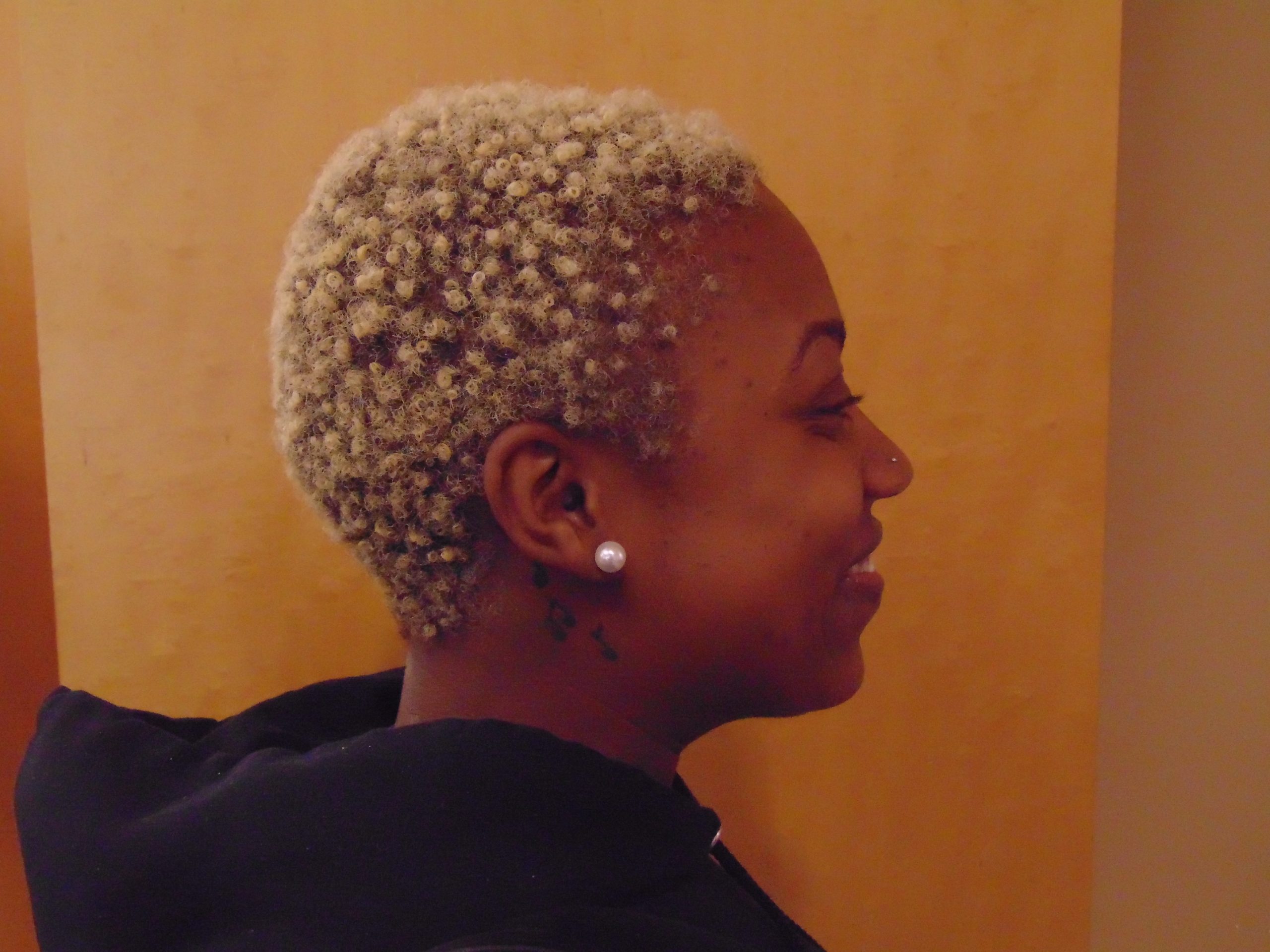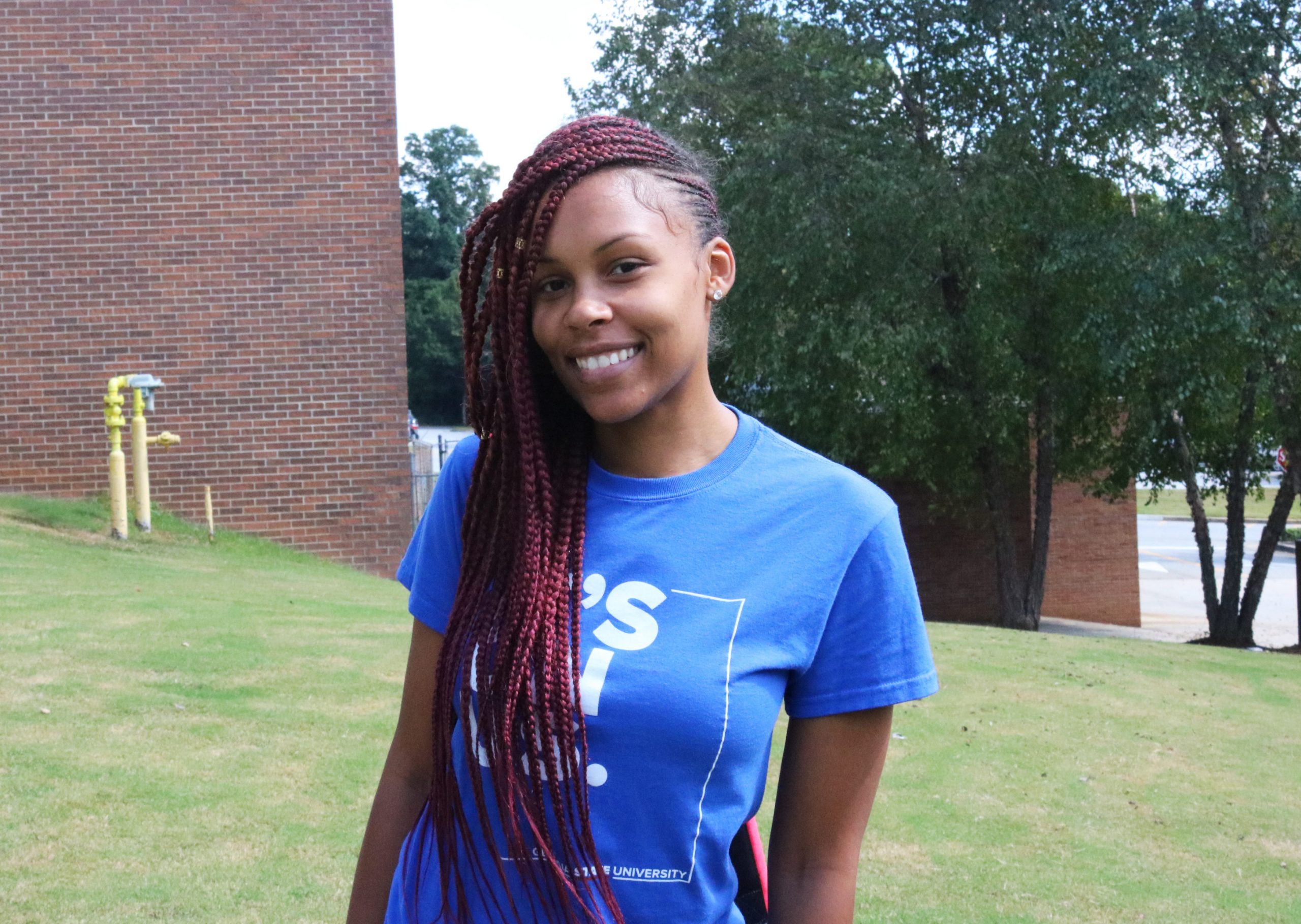The community behind the newest hair color craze
How bright hair color entered the mainstream
Sydney Bloeme
[dropcap]T[/dropcap]he past four years have seen a rise in popularity of bold and bright hair colors. This new form of self expression and counterculture deviates from the norm of dress codes and corporate America’s demanded “natural colors,” in turn leaving us with both bleach burns and detention slips. Today, this trend has climbed its way into the mainstream and while some attitudes have changed, the acceptance hasn’t been universal.
“Nicki Minaj did colored hair before Kim Kardashian, but when she did it, it was seen as hood, ghetto … Once white celebrities do it, it becomes a trend,” Victoria Hibbert, a student sitting in the plaza browsing Instagram, said while pushing her bright green-toned locks behind her shoulder.
Hibbert is no stranger to hair color. She has been rocking brightly dyed hair since high school. She said she notices more people today experimenting with their hair color than there was when she first started.
She thinks because of Instagram influencers such as Kim Kardashian and Kylie Jenner adopting bold hair, Hibberts said, “Now it’s a trend.”

Jamille Bell, president of Black Student Achievement, explained that bright hair color gets its origins from the black queer community. What we call trends today, such as colorful hair, wigs and acrylic nails, have been an integral part of self expression in the black community long before social media.
“It’s something that started in the hood,” Bell said. “It’s the same with like very long acrylic nails, colored hair, extensions, like we just didn’t get the credit for it. Black women have been wearing wigs since the early ‘50s.”
Bell pointed out that while these forms of self expression are celebrated within the black community, the outside world hasn’t always been accepting. Sitting next to Bell was her friend Storm Harrison, who raised the question: On whom is it celebrated?
Jamille Bell, president of Black Student Achievement, explained that bright hair color gets its origins from the black queer community. What we call trends today, such as colorful hair, wigs and acrylic nails, have been an integral part of self expression in the black community long before social media.
“It’s something that started in the hood,” Bell said. “It’s the same with like very long acrylic nails, colored hair, extensions, like we just didn’t get the credit for it. Black women have been wearing wigs since the early ‘50s.”
Bell pointed out that while these forms of self expression are celebrated within the black community, the outside world hasn’t always been accepting. Sitting next to Bell was her friend Storm Harrison, who raised the question: On whom is it celebrated?
“Under this [wig], I have orange hair. But someone like [white women] can go [into a job interview] and they won’t think twice, they’ll give you a job,” Harrison said.
“Under this [wig], I have orange hair. But someone like [white women] can go [into a job interview] and they won’t think twice, they’ll give you a job,” Harrison said.
Harrison loves her orange hair but feels frustrated by the pressure to tone herself down in her field of work.
“When I go to pre-med conferences, I always wear wigs. I can never wear hair color,” Harrison said.
One of Harrison’s friends recently experienced a similar problem. The friend sported brightly dyed pink hair. When she went in for a job interview, she donned a black wig to help her chances of getting the job.
After she landed the job, she decided to come in “bare headed,” displaying her new favorite look. And while she felt confident and acceptable in her new look, the same couldn’t be said for her employer.
“They tried to look in the handbook to see if they could say something about it but they hired her like that,” Harrison said.
Morgan Davis said she has never faced discrimination because of her lilac hair. She thinks it could be due to her race as a white woman, because she said when it comes to people’s acceptance of bold hair color, depending on race, there’s “definitely a difference.”
“Nobody thinks anything of it if I do something like this to my hair,” Davis said. “Being a white girl, I can do whatever I want pretty much and I hate to have to say that out loud but a lot times it’s the case.”
Davis has seen wigs become more mainstream and while she thinks it’s a great way for hair dying newbies to be able to change their look, she feels the new acceptance of it as inconsistent.
Harrison loves her orange hair but feels frustrated by the pressure to tone herself down in her field of work.
“When I go to pre-med conferences, I always wear wigs. I can never wear hair color,” Harrison said.
One of Harrison’s friends recently experienced a similar problem. The friend sported brightly dyed pink hair. When she went in for a job interview, she donned a black wig to help her chances of getting the job.
After she landed the job, she decided to come in “bare headed,” displaying her new favorite look. And while she felt confident and acceptable in her new look, the same couldn’t be said for her employer.
“They tried to look in the handbook to see if they could say something about it but they hired her like that,” Harrison said.
Morgan Davis said she has never faced discrimination because of her lilac hair. She thinks it could be due to her race as a white woman, because she said when it comes to people’s acceptance of bold hair color, depending on race, there’s “definitely a difference.”
“Nobody thinks anything of it if I do something like this to my hair,” Davis said. “Being a white girl, I can do whatever I want pretty much and I hate to have to say that out loud but a lot times it’s the case.”
Davis has seen wigs become more mainstream and while she thinks it’s a great way for hair dying newbies to be able to change their look, she feels the new acceptance of it as inconsistent.

“Black women have always worn wigs, but I definitely see more white women doing it, myself being one of them.”
From humble origins of dip dye and ombre, long gone are the days of subtle color. As more and more people commit to slathering their scalps with bleach and flooding their follicles with dye, we must stop and ask ourselves how we got here.
Social media mogul and born billionaire Kylie Jenner first dipped her hair into color at the 2014 Billboard Music Awards when she was 16 years old. Around this time, Kylie began changing her look. She gained lip fillers and started experimenting with a new and previously uncharacteristic approach to style. Something else new during this time was her then-affiliation with hip-hop artist Tyga.
Kylie continued to alter her look throughout the years, such as developing a curvier silhouette, larger breasts and increasingly plumper lips, leading many people to claim both plastic surgery and appropriation. Tyga recently said in an interview with Nicki Minaj that he feels responsible for much of Kylie’s shift in character and eventual popularity.
“When I stepped in, there was a lot of codes being taught. It was like, you could do this, you should start this, you should start doing your hair like this…you should add that because you need black people to f*ck with you ‘cause you need culture,” Tyga said. “If you ain’t got black people behind you, you ain’t got nothing… You can’t influence nobody.”
Kylie soon began diving into the world of what was previously exclusive to black culture. She started popularizing long acrylic nails, plump lips and sporting various wigs on her social media, something previously out of her character. And her audience loved it.
And Kylie’s audience and influence is massive. On her Instagram, Kylie has an average of 49,951 new followers a day and 1,498,543 followers a month. Her online shops sell out in seconds and at a current net worth of $900 million, many speculate she may soon be the youngest “self-made” billionaire at only 20 years old.
The popularity of acrylic nails with nail art, gems and charms skyrocketed. Women were trading out their naturally slender lips for something plump and large that resembled those naturally on black women, who for years, have been made to feel insecure through ridicule and oversexualization.
Mainstream culture has been able to profit on what previously held a negative connotation in order to play dress up without second thought—intentionally erasing its origins for brand building and social media hits.
For the black community, this is nothing new as items with deep cultural significance, such as Dashikis, dreads, hip-hop, baby hairs, cornrows, twerking and slang (to name a few) have been reduced to trends.
“Within the black community, it’s all in the background, instead of the forefront. We don’t get as much representation of our culture until later on and then it is manipulated so it is not given the full credit,” Bell said.
So the next time you browse your social media and discover a new “trend,” be mindful about what’s happening behind the feed.
Kylie soon began diving into the world of what was previously exclusive to black culture. She started popularizing long acrylic nails, plump lips and sporting various wigs on her social media, something previously out of her character. And her audience loved it.
And Kylie’s audience and influence is massive. On her Instagram, Kylie has an average of 49,951 new followers a day and 1,498,543 followers a month. Her online shops sell out in seconds and at a current net worth of $900 million, many speculate she may soon be the youngest “self-made” billionaire at only 20 years old.
The popularity of acrylic nails with nail art, gems and charms skyrocketed. Women were trading out their naturally slender lips for something plump and large that resembled those naturally on black women, who for years, have been made to feel insecure through ridicule and oversexualization.
Mainstream culture has been able to profit on what previously held a negative connotation in order to play dress up without second thought—intentionally erasing its origins for brand building and social media hits.
For the black community, this is nothing new as items with deep cultural significance, such as Dashikis, dreads, hip-hop, baby hairs, cornrows, twerking and slang (to name a few) have been reduced to trends.
“Within the black community, it’s all in the background, instead of the forefront. We don’t get as much representation of our culture until later on and then it is manipulated so it is not given the full credit,” Bell said.
So the next time you browse your social media and discover a new “trend,” be mindful about what’s happening behind the feed.
